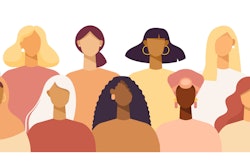
A diverse supply chain is a strong supply chain. As organizations increasingly embrace supplier diversity throughout their procurement processes, they’re gaining access to disruptive technologies, specialized insight, new talent and localized expertise—all of which play a key role in bolstering their global supply chain operation. These efforts make good business sense: studies show that companies with a diverse supplier base realize a 133% greater return on procurement investments than those without supplier diversity.
However, a great divide persists. The World Bank reports that one in three businesses are owned by women globally, and yet corporations, governments, and other large organizations spend only 1% with women-owned businesses. As we approach International Women’s Day, it’s important to highlight the role of women-owned and women-led businesses. These organizations face a unique set of challenges, especially as it relates to access to markets—including access to buyers, changing market insights, technology and sufficient support to scale.
To reap the full benefits of supplier diversity and help women-owned businesses thrive within the world of procurement, we must focus on the right access, data, technology and overall approach.
Women-Owned Businesses Offer New Procurement Opportunities
Finding a diverse set of suppliers is not as easy as it sounds. But it has become a priority in today’s business environment. Governments around the world are implementing regulations for increased diversity and inclusion. Meanwhile, consumers have been outspoken about their preferences to buy for quality and impact from women-owned and other diverse and underutilized businesses, with recent data showing that a total of 31% of the general population is likely to prioritize shopping women-owned brands.
It’s clear that procurement systems built on inclusive sourcing goals will make an enormous difference for businesses and their supply chains. And when it comes to women-owned companies specifically, including them in the competitive procurement process can create an outsized impact because of the way women innovate, anticipate needs and solve for community and environmental challenges.
In the United States, 42% of all businesses are owned by women—which has played an important role in the country’s rebound from the COVID-19 pandemic with women founding about half of all new businesses for three years in a row. Not only are women building successful businesses on their own, but they make or influence 85% of all consumer purchasing decisions.
According to the World Economic Forum's Global Gender Gap Report 2023, it will take 131 years to reach full gender parity. Advancing women’s business and employment opportunities could add $12 trillion to global GDP, boosting some countries' economic output by as much as 35% because greater gender equality leads to better socioeconomic opportunities for everyone to contribute to and benefit from inclusive economic growth.
With this scope and buying power, having a platform for women as both business owners and consumers is critical to the economy as well as society. Which begs the question: How can we make it easier for enterprise organizations to find and do business with women-owned companies?
The Tools and Technology to Build a Diverse Supplier Network
With the worst effects of the COVID-19 pandemic mostly in the rearview mirror, procurement leaders remain focused on solving for supply chain risk—with an emphasis on avoiding delayed deliveries from suppliers around the world.
As a result, many are localizing parts of their supply chain. Business leaders are prioritizing more sophisticated approaches to supplier selection as well as inclusive sourcing metrics within their procurement strategies. The momentum behind localization offers a clear opportunity to build a more diverse network.
To make identification and onboarding of diverse suppliers easier, companies need the right tools. A recent IDC study shows that companies that use business networks have higher levels of digital maturity, supplier collaboration and supply chain performance. Today’s business network platforms can help connect companies with diverse, qualified and sustainability-driven suppliers that can deliver the products or services they’re looking for. Companies can view up-to-date information, ensure the proper certifications are in place and meet inclusive sourcing needs, whether they need a one-off purchase or a long-term relationship.
The pandemic also highlighted the need for quick reactions to changing circumstances. Within these business networks, artificial intelligence can offer an additional layer of assistance, helping companies anticipate disruptions in the supply chain and quickly identify suppliers that may be able to fill the gap. In fact, diverse supplier networks usually include smaller companies offering increased agility and flexibility, including innovative and nimble women-owned businesses.
By investing in the tools and technology to onboard diverse suppliers, businesses can ensure they have access to more of the world's best suppliers—and not just the ones they always buy from.
Championing Access for Women-Owned Businesses
With the right tools and technology, buyers can build a more diverse supplier network with more women-owned companies available in the global marketplace. In today’s landscape, we’re seeing firsthand how this pays off: a recent Accenture report shows that a majority of consumers would stop buying from companies if they do not take visible action on issues like inclusion and diversity.
To compete in the global marketplace, we need many more women-owned businesses to be visible to their potential customers—and those businesses need resources to make themselves visible.














![Pros To Know 2026 [color]](https://img.sdcexec.com/mindful/acbm/workspaces/default/uploads/2025/08/prostoknow-2026-color.mduFvhpgMk.png?ar=16%3A9&auto=format%2Ccompress&bg=fff&fill-color=fff&fit=fill&h=135&q=70&w=240)




